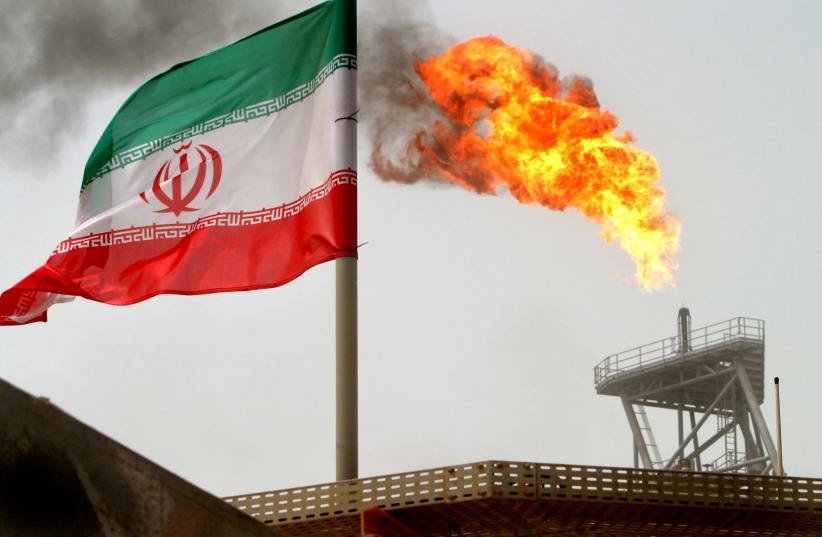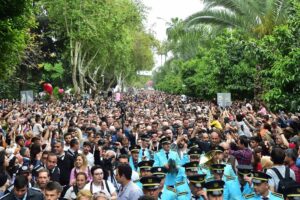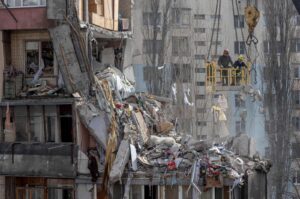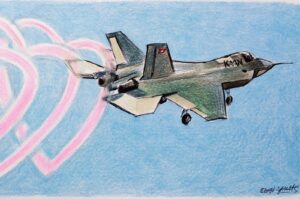The strategies of regional actors for alliance and cooperation are most evident in Iraq and Syria. The interaction between states, non-state actors and non-state armed actors in these regions affects the local equation and regional dynamics. This relationship is often characterized by actor dyads, although interactions can also take the form of a triangle. In this context, the triangular structure of the historical and continuous interaction between Iran, the Patriotic Union of Kurdistan (PUK) and the PKK has a significant impact on the dynamics in Iraq and Syria. So, it is crucial to understand the current characteristics of this strategic Iran-PUK-PKK triangle and its future projections.
The Iran-PUK-PKK triangle has been formed based on pragmatic motivations rather than ideological or political ones. Therefore, it can be defined as a “strategic triangle.” Firstly, when analyzing the Iran-PUK axis of the triangle, it is evident that the relationship between the two actors has a deep historical background. Iran and the PUK have historically shared a common goal of balancing the Kurdistan Democratic Party (KDP), which has closer relations with the U.S. and Israel. This relationship is one of the factors that has influenced the political rivalry between Irbil and Sulaymaniyah in the Kurdish Regional Government (KRG).
Additionally, the PUK serves as a tool for Iran to align with the PKK’s Syrian offshoot, the YPG, with its position and vision in Syria. Iran aims to use the PUK as a mediator in its efforts to distance the PKK/YPG from U.S. influence. The recent rapprochement and negotiations between the PKK/YPG and the PUK in 2022 serve as an indicator of this. However, Iran is also exerting serious pressure to prevent the Syrian Kurdish National Council (ENKS)-YPG talks, which were led by the KDP and supported by the U.S., from succeeding. In this process, Iran aims to balance U.S. influence on the PKK/YPG and increase its influence through the PUK instead of the KDP, which has close relations with the U.S. and Israel.
However, the PUK sees its relationship with Iran as the most effective way to maintain political power in the KRG. Especially in the context of competition with the KDP, Sulaymaniyah’s increasing prominence requires Iran’s support. The dispute and tension between Iran and the KDP provide an advantage for the PUK in this context. However, Iranian support is also significant in Bafel Talabani’s efforts to develop relations with the PKK/YPG and to present himself as a “national figure of the Kurds” based on the PUK’s historical leadership claim.
Shifting dynamics and regional strategies
When analyzing the Iran-PKK relationship, which constitutes the other axis of the strategic triangle, it is important to note that the function of the PKK has undergone a major transformation. In the past, the PKK was frequently used as a tool against Türkiye to create instability in internal security. However, in the current conjuncture, the PKK is an indispensable partner for Iran in Iraq and Syria. In the context of Iran’s characterization of the PKK, it is seen as a tool to limit the power and influence of the KDP in Iraq, balance Türkiye’s influence in the region and control an important point of the Iraq-Syria transit line with militia groups in Sinjar. Additionally, the PKK relies on Iran and Iranian-backed militia groups in Iraq to protect its influence in the Sinjar region and seek support for its hostile activities against the KDP.
However, in Syria, Iran views the PKK/YPG as an actor that could limit U.S. influence. The failure of the ENKS-PKK/YPG talks was mainly due to the PKK’s leading cadre, the KCK administration, with the support of Iran. The PKK is preventing its Syrian branch, the YPG, from seeking autonomy from its organizational authority. This situation shapes the Iran-PKK axis in Syria.
Finally, upon analyzing the PUK-PKK relationship, the last axis forming the triangle, it becomes apparent that the most significant factor that brings the two actors closer is their attitude toward the KDP. The PKK has a hostile attitude toward the KDP, while the PUK has a historical rivalry with them. Additionally, Sulaymaniyah, which is under the influence of the PUK administration, has become one of the PKK’s centers for media, propaganda and financing. The region is considered a “safe haven” for PKK activities. The PUK sees the PKK as a means of exerting pressure on the KDP and as an actor that controls the passage of the line extending to the PKK/YPG in northern Syria. This is evident in Bafel Talabani’s contact with the PKK/YPG in line with the “national leadership” role he is trying to establish for himself and the PUK. The PKK has the potential to facilitate this route for the PUK because of its organizational authority over the YPG.
Challenge to the triangle: Türkiye effect
The Iran-PUK-PKK strategic triangle operates according to the objectives of each actor, but it faces a significant challenge that weakens its junction points and reduces its functionality. Türkiye poses a challenge to this strategic triangle and is taking action to address its national security concerns and objectives.
Türkiye’s counterterrorism and targeted operations against the PKK and PKK/YPG in Iraq and Syria have led to a stalemate for the PKK in these regions. As a result, the PKK component in the Iran-PUK-PKK triangle has been significantly weakened. Additionally, Türkiye’s recent pressure and sanctions on Sulaymaniyah have had a serious impact on the PUK. Türkiye is demanding that the PKK’s presence and activities in Sulaymaniyah be limited. The PUK is now faced with a difficult decision. It must choose between remaining loyal to the strategic triangle to which it belongs or improving its relations with Türkiye. This complexity is affecting the PUK-PKK axis of the triangle.
Iran, Türkiye’s only equal interlocutor in the strategic triangle, is also indirectly affected by Türkiye’s challenging moves. Türkiye’s operations against the PKK and its pressure on the PUK also send a message to Iran. Türkiye emphasizes cooperation in the fight against terrorism and demands that Iran break the strategic triangle in the context of bilateral relations. Otherwise, Türkiye’s actions against the PKK and the PUK may render the strategic triangle dysfunctional, which would cause Iran to suffer a significant loss.




















































Be First to Comment